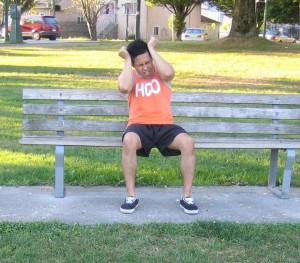Fact Checked
A migraine is described as a severe and painful headache with sensory warnings such as flashes of light, tingling sensations in the arms and legs, blind spots, nausea, vomiting, increased sensitivity to sounds and light as well as visual disturbances known as auras that occurs before the start of an attack.
Symptoms of migraine headaches
- There is an increased pain during any form of physical activity
- Pain is severe, throbbing and pulsating
- Feeling sick and physically sick
- Incapable of performing regular activities due to pain
- Sensitivity to sounds and light and can be relieved by lying in a darkened room.
- Sometimes, there are changes in the body temperature as well as diarrhea and tummy aches.
- Moderate pain that is felt only on one side of the head during an attack, but can also happen on either side of the head.
Causes

- Migraines can be caused by imbalance in the chemicals in brain such as serotonin which help in regulating the nervous system. Levels of serotonin drop during an attack which causes the trigeminal system to release neuropeptides which spreads to the outer covering of the brain known meninges and result to a headache.
- Hormonal changes in women can cause migraines
- Migraines develop during pregnancy or menopause.
- Eating cheese, salty foods and processed foods as well as skipping meals or fasting.
- Sensory stimuli such as being exposed to the glare of the sun, bright lights and loud sounds.
- Unusual smells such as paint thinner, perfume and secondhand smoke
- Changes in the weather and barometric pressure
- Use of oral contraceptives and vasodilators such as nitroglycerin
Treatment
- Practice relaxation by lying down on bed with the eyes close and then take deep breaths and concentrate on relaxing one group of muscle at a time until every muscle in the body is fully relaxed.
- Apply an ice pack to minimize tension and migraine headaches which provides a numbing effect that lessens the pain. Wrap ice cubes using a clean towel and place on temples, forehead and at the back of the neck for at least 10-15 minutes several times every day as needed. Another option is to alternately apply hot and cold compress on the affected area for at least 15 minutes several times as needed.
- Drink ginger tea several times throughout the day until the symptoms are reduced. Drink ginger tea on the onset of the headache. Another option is by chewing a raw piece of ginger root.
- Drink plenty of water to help hydrate the body which can prevent migraine headaches. Consume decaffeinated beverages to help restrict vessels of blood to relieve the pain. Avoid caffeine to help minimize the severity of the attacks.
- Take nutritional supplements such as riboflavin, magnesium, coenzyme Q10 and melatonin every day to help lessen the migraines.
- Rub a few drops of peppermint oil in the forehead and at the back of the neck.
